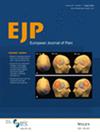Social Isolation Induces Sex-Differentiated Sensory-Emotional Pain Responses and Oxytocinergic Receptors Alterations in Mice
Abstract
Background
Chronic pain is a global health problem frequently associated with psychopathologies such as anxiety and depression, with a higher prevalence in women. However, most of the preclinical studies have used male animals as experimental subjects, highlighting the importance of studies that consider sex as a biological factor modulating the responses related to chronic pain. The experience of high social stress can maintain and exacerbate chronic pain. From a neural perspective, oxytocin plays a critical role in modulating behavioural and neurobiological responses related to stress and pain.
Methods
Therefore, this study aimed to evaluate the sensory and emotional effects of social isolation in male and female mice subjected to chronic constriction injury (CCI). Additionally, it aims to investigate the role of oxytocinergic neurotransmission in chronic pain across different sexes.
Results
The results demonstrated that both sciatic nerve constriction (CCI) and social isolation independently induced mechanical hypersensitivity and increased anxiety- and depression-like responses in both male and female mice. Despite no synergistic interaction, social isolation independently triggered sensory and emotional changes comparable to those induced by CCI. However, only females exhibited an increase in facial pain expressions and a worsening of pelage condition when housed individually. Moreover, females, but not males, had a decreased expression of oxytocin receptors in the hypothalamic paraventricular (PVN) and supraoptic (SON) nuclei under social isolation.
Conclusions
These findings indicate that social isolation can induce sexually dimorphic behavioural and neurophysiological responses in mice.
Significance Statement
This article shows that social isolation enhances pain perception and oxytocinergic neurotransmission, especially in female mice. This understanding of how pain affects different sexes may contribute to developing a sex-specific new therapeutic target to assist individuals living with pain.

 求助内容:
求助内容: 应助结果提醒方式:
应助结果提醒方式:


